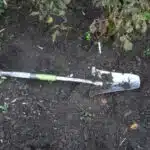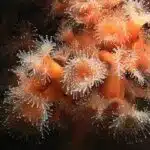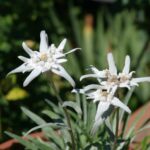The anemone flower is one of the most beautiful and delicate flowers in the world. With its wide variety of colors and unique blooms, it is no wonder why the anemone is a favorite among gardeners and florists alike. For those looking to add this stunning flower to their gardens, understanding how to properly grow and care for anemone (windflower) is essential for success.
As a specialist in botany and gardening, I can tell you that growing anemones requires patience, but with the right knowledge, you can have beautiful blooms in your garden year after year! In this article, I will provide you with all the information you need to get started on your journey of growing and caring for these amazing flowers.
By following my instructions carefully, you’ll be able to create a vibrant display of color in your garden while providing yourself with a sense of joy through serving others. Whether you are new to gardening or have been tending plants for years, this article will give you all the tips and tricks needed to meet your gardening goals!
Know Your Anemone Varieties
Anemones, otherwise referred to as windflowers, are a great addition to any garden. As with many plants, it is important to be aware of the varieties available in order to make sure you are getting the best from your anemone planting. There are several main types of anemone, each with their own unique characteristics that make them desirable for different kinds of gardens.
The most popular types of anemones include Japanese anemones, wood anemones and poppies. These three varieties bring a variety of colors and shapes to the garden that can be used to create beautiful displays or focal points in the landscape. Additionally, they can provide a lovely backdrop for other plants in your garden.
When selecting the right type of anemone for your garden, consider its size and color as well as its soil requirements. Some varieties are more tolerant of wetter soils than others, while some require more light than others do. Knowing these details is essential for creating a successful planting plan for your garden.
Once you have selected the perfect anemone variety for your needs, it’s time to get started on planting them in your garden. Planting tubers in spring is usually recommended so that they will have plenty of time to establish themselves before the cold winter months arrive.
Plant Anemone Tubers In Spring
When planting anemone tubers, there are a few key points to consider. Firstly, spring is the best time to plant anemone tubers, as this allows them to get established before the heat of summer. Secondly, it’s important to select a well-draining soil that’s rich in organic matter and has a slightly acidic pH level. Here’s a quick checklist of what you need for successful planting:
- Anemone tubers
- Soil with good drainage
- Organic matter such as compost
- A slightly acidic soil pH (around 6.0). Once these four elements are in place, you can start planting. Dig out shallow trenches that are about six inches deep and three inches apart. Place the anemone tubers into the trenches so that they’re covered by one inch of soil. Firm down the soil around them gently and water thoroughly to ensure good contact between the tuber and the soil. If you live in a particularly dry climate, you may have to water more frequently during hot weather. Finally, choosing the right location for growing anemones is just as important as having the right conditions for planting them.
Choose A Suitable Location For Growing Anemones
Gardening with anemones is a fun and rewarding experience that can bring lasting beauty to any outdoor space. It can be especially satisfying to watch these flowers bloom in the springtime, blanketing the garden with their unique charm. However, before you can enjoy the blooms of these beautiful plants, it is important to ensure that their environment meets their needs for growing successfully. When it comes to planting anemone tubers in the spring, selecting the right location is key.
When selecting a suitable location for growing anemones, it’s important to consider a few factors. The area should have plenty of sunlight and not be overly shaded; six hours of direct sunlight each day is ideal. The soil should also be well-draining and fertile and kept moist during the growing season. Anemones may also benefit from some protection against strong winds and other weather conditions that could cause damage.
It’s important to note that anemones are not suited for areas with heavy clay soils or those exposed to extreme temperature fluctuations, as they can cause stunted growth or even death of the plant. After you’ve chosen a suitable location for your anemone garden, you’re ready to prepare the soil for planting tubers in the spring.
Prepare Soil For Planting Anemone Tubers
Irony alert! Anemone flowers are believed to be the embodiment of fragility, yet they require quite a bit of strength and preparation to survive.
As a botanist, I’ve seen firsthand how critical it is to select an appropriate location for anemone growth. But that’s only the beginning—it turns out that preparing the soil is equally as important.
The ideal soil conditions for anemones are slightly acidic, moist and well-drained. To make sure your soil meets these requirements, mix in some compost or peat moss prior to planting. Also be sure to check the pH level—anything above 7.0 can inhibit its growth—and add sulfur if necessary.
With these simple steps you’ll soon see your lovely windflower blooms in full effect!
Plant Anemone Tubers At The Correct Depth
It’s time to get down to brass tacks, as planting anemone tubers at the correct depth is key to ensuring they thrive. The process may seem daunting at first, but with the right preparation and knowledge, it can be done with relative ease.
First and foremost, you must ensure that the soil is of a suitable consistency for planting. If it’s too dry or too wet, then your anemones won’t take root as intended. To make sure your soil is in tip-top shape:
- Amend the soil by adding compost or other organic matter
- Ensure that your soil drains well by testing out its drainage capabilities
- Add soil amendments such as peat moss and sand if needed
Once you’ve prepped the soil, it’s time to plant those anemone tubers. Dig a hole no more than 4 inches deep and place each tuber in the bottom of the hole. Cover them up with loose soil, taking care not to overcompress them as doing so will prevent them from growing properly. As an experienced botanist or gardener would know, this step must be done with precision; failure to do so could result in unsatisfactory results in terms of growth or blooming.
After all of this work has been complete, don’t forget that your newly planted anemones need plenty of water. Keep their soil moist but not soggy until their leaves appear above ground; then reduce their water intake slightly but keep consistent moisture levels for best results. With these tips in mind, you should have no problem caring for your anemones like a pro!
Water Anemones After Planting
Watering anemone flowers after planting is the cream of the crop when it comes to successful growth. Like a gold standard, this step must not be overlooked if you want to experience beautiful blooms! After planting anemone tubers at the correct depth, these windflowers need to be tended to in order for them to reach their full potential. Here are some easy-to-follow tips for keeping your anemone flowers hydrated and healthy:
• Water regularly: o Be sure to water your anemones weekly or as needed during dry spells. Water deeply so that the soil can become moist throughout. o Monitor your plants closely, as overwatering can cause root rot. It’s better to err on the side of caution and keep your plants consistently damp rather than soggy. • Monitor soil moisture levels: o Use a soil moisture meter or your finger to check how wet the soil is at least once a week. If it feels dry, add more water until the meter reads within its optimal range. o Adding mulch around the plants will also help retain moisture in the soil, which makes watering less frequent.
As a specialist in botany and gardening, I strongly recommend adding water after planting anemone tubers for optimum growth and health of these beautiful flowers. With proper maintenance and care, you’ll be rewarded with vibrant blooms that will last through fall! Now that you’ve planted your anemones and watered them, it’s time to move onto caring for them during their growing season…
Care For Anemone Flowers During The Growing Season
As you embark on your journey to growing vibrant and colorful anemone flowers, it is important to understand how to properly care for them during the growing season. Taking the time to develop a plan for watering and feeding will ensure that your plants bloom and thrive in their garden beds. Here are a few tips for caring for anemone flowers:
Firstly, keep your anemones well-watered throughout their blooming season. Water deeply once a week or when the soil feels dry; however, avoid over-watering as this can lead to root rot. To encourage vigorous flower growth, apply a balanced fertilizer every two weeks during the flowering period.
Secondly, regular deadheading or removing spent flowers is necessary to prolong flowering and promote new buds. In addition, light pruning of leggy stems can help minimize disease problems and improve air circulation. However, avoid heavy pruning as this may reduce flowering in the following year’s growth cycle.
Lastly, be sure to check regularly for signs of pests or diseases such as rusts, leaf spots and powdery mildew. If you find any issues with your anemone plants, treat them immediately with the appropriate insecticide or fungicide according to label instructions. With these simple yet effective steps in place for taking care of your windflower during the growing season, you can be assured of having beautiful blossoms in your garden all summer long!
Feed Anemone Flowers During The Growing Season
If you’re looking to brighten up your garden with beautiful anemone flowers, you’ve come to the right place. By following the steps in this guide, you’ll be sure to have something special to show for your efforts in no time at all. In particular, in this section we will cover how to feed anemone flowers during the growing season.
To keep your anemones blooming and healthy throughout the growing season, it is essential that they are fed regularly with a water-soluble fertilizer such as 10-10-10 or 20-20-20. When applying fertilizer, make sure to follow the application instructions on the packaging carefully and avoid over fertilizing. A general rule of thumb is to use one tablespoon of fertilizer per gallon of water and apply every two weeks during active growth. Fertilizer should not be used when temperatures exceed 80°F (27°C) or when plants are under drought stress.
For best results, it is also helpful to supplement feeding with compost tea or manure tea. Compost tea provides a rich source of nutrients that can help promote vigorous growth and abundant flowering. To make compost tea, simply steep 1 cup of finished compost in 5 gallons of warm water for 24 hours before straining out any solid matter. This mixture can then be applied directly to soil around the plant’s root zone during watering sessions every two weeks throughout the growing season.
With these tips in mind, your anemone flowers will be sure to thrive throughout their life cycle. The next step is deadheading spent blooms – but we’ll get into that later!
Deadhead Spent Anemone Blooms
When it comes to keeping anemone flowers looking their best, deadheading is a vital step. Deadheading is the process of removing spent blooms from the plant. Not only does this make the garden look tidier, but it also encourages new flower growth and spurs on healthier plants for many more years of enjoyment. To properly deadhead anemone blooms, there are several steps to take:
- Remove any wilted or discolored blooms as soon as possible.
- Cut off the stem at its base, making sure to leave no stubs behind.
- Dispose of the spent blooms away from the garden area.
- Prune back any foliage that appears withered or damaged.
By following these steps, you can ensure that your anemone plants will remain healthy and vibrant throughout their life cycle. Deadheading also helps keep pests and diseases away by removing potential breeding grounds for them; this reduces their impact on your garden in the long run. Taking care of your anemone flowers in this manner will help you enjoy them for many years to come! After deadheading has been completed, it’s time to focus on overwintering anemone plants so they can survive through harsh winter conditions.
Overwinter Anemone Plants
Overwintering anemone plants is an important part of their care and should not be overlooked. These hardy plants are able to survive the colder months, but they require some extra steps in order to ensure success. Anemone plants can be easily overwintered by taking a few simple precautions.
To begin with, it’s important to note that the soil should never be allowed to freeze solid around the crown of the anemone plant. To avoid this, cover the soil with a thick layer of mulch or straw to protect it from cold temperatures. If you live in a very cold region and experience freezing temperatures for long periods of time, you may want to consider moving your anemone plants indoors until warmer weather arrives.
Watering should also be reduced during winter months, as the plant will go dormant and won’t need nearly as much hydration. As temperatures start to warm up in springtime, gradually increase watering until returning to normal levels. Although most anemones are evergreen, they may still drop some foliage during winter months due to cold temperatures and lack of water – this is normal and nothing to worry about!
It’s important to provide your anemone plant with proper overwintering care so that it can remain healthy and strong year-round. With a bit of effort and dedication, your anemone can provide many years of beauty for your garden or yard! Moving forward into springtime, it’ll also be necessary to divide any overcrowded clumps into smaller sections in order for them to continue growing successfully throughout the season
Divide Anemone Plants In Spring
As the sun rises in the spring, it’s a perfect time to divide anemone plants like a puzzle. This task of splitting into two or more parts is essential for keeping their vigor and beauty alive. It’s almost like giving them a new lease of life!
Division should be done when the plants are actively growing, as this ensures that they take to the soil quicker and better. Take care when handling them; use gloves if possible, and avoid too much disruption of the roots. It is best to use a sharp spade or knife to create sections of 4-5 inch depth before transplanting them in pots or other suitable locations.
Ensure that they are grown in slightly acidic soil with good drainage, and mulch around the base of each plant so as to retain moisture levels and keep weeds at bay – both necessary for successful growth. Keep in mind that anemones don’t require too much maintenance or fertilizer; just some occasional pruning will help them thrive.
With a little bit of care and attention, your anemone plants will bloom magnificently every year! Now, let us look at how we can control pests and diseases on these beautiful blooms.
Control Pests And Diseases On Anemone Plants
The health of anemone plants can be maintained by paying close attention to pests and diseases. It’s important to keep a regular watch out for any signs that could indicate the presence of either, as the best way to protect these delicate flowers is to prevent their onset in the first place. Common pests include aphids, slugs, snails, and caterpillars. These can usually be removed manually or with approved pesticides. Diseases like powdery mildew, leaf spot, and root rot will require more specific treatments that should be determined based on the type of anemone being grown.
It’s also a good idea to practice good hygiene when it comes to caring for anemones. This means cleaning up debris around the plants such as fallen leaves and old flower heads. Additionally, avoid overhead watering whenever possible and instead opt for drip irrigation or hand-watering at ground level. Proper air circulation will also help reduce humidity levels which can help limit the spread of both pests and diseases.
Following these steps will ensure that anemone plants are receiving the best care possible so they can continue to thrive in your garden year after year. With proper maintenance and attention, these beautiful flowers will bloom beautifully each season – providing a stunning display of color in any landscape setting! Now let’s take a look at how we can propagate anemone plants...
Propagate Anemone Plants
Propagating Anemone plants is a simple and rewarding process. When done correctly, it can elevate the beauty of your garden in no time. I remember when I first propagated anemone for my grandmother’s garden; it was like watching an artist create a masterpiece.
To propagate anemone plants, you need to perform the following steps:
- Divide the root clump – Dividing the root clumps is one of the most effective ways to propagate anemone plants. You will need a sharp knife or spade.
- Plant each division in its own pot – Once you have divided the root clump, plant each division in a separate pot with well-draining soil. Make sure not to bury the crown too deep as this will reduce flowering potential.
- Place in partial shade – Place your newly planted divisions in partial shade and keep them moist until they become established.
With these three steps, you can easily propagate Anemone plants and enjoy their beautiful blooms year after year! As an added bonus, propagating Anemone plants is also a great way to save money on buying new plants each season. With just a bit of patience and care, you can have stunning blooms that will make your garden shine!
Anemone Flowers For Cut Arrangements
What a coincidence! Just when you thought you had learned all there is to know about growing and caring for anemone plants, another interesting aspect pops up. Anemone flowers can be used to create stunning cut arrangements. It’s no surprise that this flower has been long admired by botanists and gardeners alike.
When it comes to cutting anemone blossoms for use in floral arrangements, timing is key. The blooms should be cut just as they start to open from their buds; if waiting too long, the flowers will become too fragile for arranging. This often means cutting them early in the morning when the plants are still covered in dew or frost. Cut stems should be placed immediately in a container of warm water and given time to open fully before using them in arrangements.
When selecting anemones for a bouquet, choose those with dark centers and slightly curved petals since these will have the most vibrant coloration when arranged together. To keep cut flowers fresh after they are cut, avoid exposing them to high temperatures or direct sunlight. Place them in a cool area out of direct sunlight and make sure that the vase water is changed every 2-3 days.
Using anemone flowers for cut arrangements can bring a unique beauty to any occasion or even just as a way of brightening up your home!
Anemone Flowers For Dried Arrangements
The timeless beauty of anemone flowers can now be enjoyed from beyond the grave – that’s right, we’re talking dried arrangements! As a botany and gardening specialist, I’m here to tell you that growing your own anemone blooms for drying is not only easy, but incredibly rewarding.
Let’s start with the basics: Anemones need plenty of sunlight and well-draining soil to thrive. To ensure their success, make sure you’re planting in a spot where they’ll get at least 6 hours of direct sunlight every day. Furthermore, allow the soil to dry out completely between waterings or else you’ll risk drowning your flowers.
Now, if you want to preserve your blooms for long-term enjoyment, here’s what you need to do: once they reach full bloom (usually in late spring or early summer), cut them just below the flower head and hang them upside down in a dark, dry area until they’re completely dry. Once dry, arrange them however you please – it doesn’t get any easier than this!
So don’t be afraid to dip your toe into the world of dried floral arrangements; with some patience and practice, you can easily learn how to grow and care for anemone flowers that will last for years to come.
Frequently Asked Questions
What Is The Best Time Of Year To Plant Anemone Tubers?
Anemone tubers should be planted during the late-spring or early summer months for best success. Planting in spring, rather than in autumn, gives the flowers a head start and helps them to establish themselves before winter. It is important that the soil is not too cold, as this can cause issues with germination. Care must also be taken to ensure that the soil is kept moist but not soggy at all times and that it’s well-draining.
When planting your anemone tubers, ensure they are placed around 2 inches deep into the prepared soil and around 8-12 inches apart from each other. Water thoroughly after planting and then mulch around the plants to help retain moisture in the soil. The addition of some well-rotted manure will help give your anemones a good start as they grow throughout the season.
As your anemones begin to bloom in late summer, regular deadheading of spent blooms will encourage further flowering while also helping to keep your flower beds looking tidy. Once flowering has finished, remove any dead foliage and stems but leave any healthy foliage in place until spring so that it can act like a blanket over the tubers during cold weather conditions. This will help protect them from frost damage so that you can enjoy more beautiful blooms year after year.
Are Anemone Plants Prone To Diseases And Pests?
Anemone plants, also known as windflowers, are a favourite of gardeners and flower lovers alike. While they may be a dream come true for many, it’s important for gardeners to know the risks associated with them. Are anemone plants prone to diseases and pests? Let’s explore this further.
The short answer is that, like any other plant, anemones can be subject to pests and diseases if the conditions are right. However, with proper care and attention, they can thrive in most gardens – even those that may have seen pest or disease problems in the past. Common issues include fungal diseases such as mildews, rusts, and root rots; as well as insect pests such as aphids and spider mites. Fortunately, these can usually be prevented or managed through good cultural practices such as avoiding overcrowding of plants; providing adequate drainage; and making sure the soil is not too wet or too dry.
To add a bit of flair to their protection plan, gardeners could also consider applying organic preventative measures such as neem oil or pyrethrin sprays to ward off insects. Additionally, companion planting with certain herbs like chives and garlic can help keep pests away while adding some extra nutrition to the soil – a win-win situation! With these precautions in place plus regular monitoring of their anemone plants’ health, gardeners should be able to enjoy vibrant blooms year after year without fear of disease or pests taking over their oasis.
In summary then: Anemone plants are generally quite hardy when given proper care but may still fall prey to common garden pests or diseases if left unchecked. Gardeners should take preventive measures against insect infestations by utilizing organic pest control methods along with companion planting and regular monitoring to ensure their anemones remain healthy and beautiful for years to come!
How Should Anemone Flowers Be Cared For During The Winter?
When it comes to caring for anemone flowers during the winter, there are a few key points to keep in mind. Firstly, it’s important to remember that anemones prefer cooler temperatures. Therefore, they should be placed in a spot where temperatures don’t drop below 50°F – ideally somewhere with plenty of filtered sunlight and protection from harsh winds. It’s also important to make sure the soil is kept moist and well-drained throughout the winter months, as overwatering can lead to root rot.
If you’re expecting very cold temperatures during the winter, it may be beneficial to mulch your anemone plants with organic matter such as straw or bark chips. This will help insulate the roots and protect them from harsh temperatures. Additionally, pruning any dead or damaged foliage is recommended as this will help reduce the risk of fungal diseases developing over winter.
Finally, if you want your anemone plants to look their best come springtime, fertilizing them during the winter months is essential. Anemic plants require plenty of nutrients in order to thrive and grow vigorously when warm weather returns; so applying a slow-release fertilizer such as fish emulsion every couple of weeks is recommended for optimal results. With these simple tips in mind, you’ll be sure to have healthy anemone blooms come springtime!
What Is The Best Way To Propagate Anemone Plants?
Propagating anemone plants is like taking a miracle and making it multiply. Its beauty and charm can be shared with friends, family, or even strangers in the garden. With just a few simple steps, anyone can become a propagation prodigy. Here’s how to do it.
To start, anemones are best propagated by division in the fall after flowering has finished. Use a sharp spade or knife to divide the clumps of rooted stems into smaller sections – each portion should contain at least 2-3 healthy roots – and then plant them into prepared soil. It’s important to use well-draining soil that contains ample organic matter such as compost or manure. From there, water the newly divided plants and wait for them to take root over winter.
Once established, you will need to provide ongoing care for your anemone plants. This includes regular watering, fertilizing in spring and autumn with general purpose fertilizer and removing any dead flowers or foliage as needed throughout the season. If you live in colder regions, mulching around your anemones can help protect them from frost damage during wintertime. To ensure maximum success, providing consistent care all year round is essential for thriving plants!
Propagating anemone plants is a great way to add colour and vitality to your garden without breaking the bank; you get more bang for your buck! With some patience and know-how, anyone can become a successful propagator of these beautiful flowers that will brighten up yards all year long!
How Long Do Anemone Flowers Typically Last In Cut Arrangements?
Anemone flowers are like a ray of sunshine, bringing bright splashes of color to any garden or bouquet. With the right care, they can last for weeks in cut arrangements, radiating their sunny beauty.
To ensure your anemone flowers last as long as possible, it is important to harvest them at the right time. Anemones should be harvested in the morning once their buds have opened. Cut stems should be placed immediately into water, and those that are not used right away should be stored in a cool place until needed. Once your anemones are in the vase, you’ll want to give them proper care. To keep them looking fresh and vibrant, re-cut the stems every 2-3 days, and change out their water as well to prevent bacteria from growing.
In addition to proper cutting and water changes, it is also important to provide good air circulation for cut anemones. To do this, place the arrangement away from direct sunlight or heat sources such as vents or fireplaces. Additionally, misting them with room temperature water will help keep them hydrated and looking fresh for longer. When cared for correctly, anemone flowers can last up to two weeks in a cut arrangement!
With these simple steps you can enjoy beautiful anemones in your home or garden for extended periods of time!
Conclusion
Anemone flowers are a stunning addition to any garden or flower arrangement. Their delicate petals, vibrant colors, and unique shapes make them both eye-catching and captivating. Planting anemone tubers in the spring is the best time for optimal blooms and growth, but with proper care throughout the winter months, you can ensure your anemones will return year after year like a loyal friend.
Propagation of anemone plants can be done through division or seed, although division is more common. With regular deadheading and proper care, these flowers can last up to two weeks in cut arrangements – their beauty brightening any room they adorn.
Like a butterfly emerging from its chrysalis, anemones bloom in all their glory with just a little love and care. If you’re looking to add a touch of elegance to your garden or home this season, consider planting some anemone tubers – you won’t be disappointed!





























